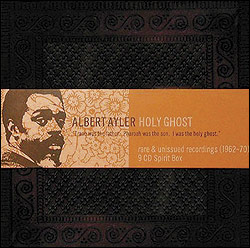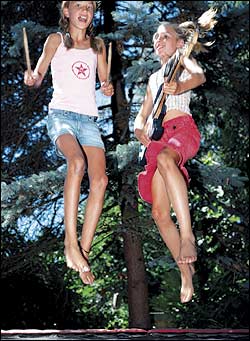There’s an anomaly near the end of Caetano Veloso’s A Foreign Sound (Nonesuch), the Brazilian singer-songwriter’s new album of American popular songs. Veloso’s definition of his territory is pretty broad—the selection starts with “The Carioca,” from the 1933 Fred Astaire–Ginger Rogers movie, Flying Down to Rio, before sweeping up Irving Berlin, Bob Dylan, and Nirvana compositions. But “Detached” is just bizarre: a flurry of shrieking strings, a fluttering of percussion, a few squawked lines that seem to be about nasty sex without physical contact, and then, after a minute and a half, a halt.
“Detached” was originally recorded by DNA, formed in 1977 in New York City by Brazilian-raised guitarist Arto Lindsay, Ohioan keyboardist Robin Crutchfield, and Japanese drummer Ikue Mori, so it’s very much an American work in the melting-pot sense. But it’s very remote from “popular”: It had never even been officially released in America until a few weeks ago, when it appeared on DNA on DNA (No More Records), a collection of the band’s long-out-of-print studio recordings and some live material. And it’s barely what would ordinarily count as a song—at least the kind that could be arranged for strings.
DNA were part of the “no wave” scene, a group of late-’70s New York bands who approached musical activity as essentially a form of contemporary art practice, as far removed from the aesthetics of pop music as the conceptual art of the time was from the aesthetics of landscape painting. (The number of bands who counted as no wave is an open question, but the microgenre’s central document was 1978’s Brian Eno–produced No New York compilation: four songs apiece by DNA and their close relatives Mars, the Contortions, and Teenage Jesus & the Jerks.) In five years of existence, DNA never made an album, as such; all they originally released were a single, a bunch of compilation tracks, and, in 1981, an EP for Rough Trade called A Taste of DNA. (Double entendre intentional: Lindsay’s lyrics are the work of somebody who’s writing as laconically and abstractly as possible but can’t stop obsessing about sex.)
Lindsay’s gone on to become a somewhat more conventional singer and songwriter who plays with the idioms of Brazilian pop, most recently on Salt (Righteous Babe), issued last month. Mori, meanwhile, has switched from acoustic drums to a set of subtle electronic noise generators, and become a pillar of the New York improv community. She’s currently part of the experimental trio Mephista, with the much younger pianist Sylvie Courvoisier and drummer Susie Ibarra. Mephista’s new Entomological Reflections (Tzadik) sometimes recalls the direction DNA was heading in its later years—it’s often hard to tell if they’re improvising freely or if they know roughly where a piece is going to stop when they start playing.
When DNA began, though, its members had only the most rudimentary idea of what to do with their instruments, and no interest in learning the “correct” way. Mori had been trained as a violinist but had never played drums before the band’s first rehearsal, for which she borrowed Mars’ drum kit. (She also barely spoke English at the time.) Crutchfield appears from the extant recordings to have been trying very hard to remember where his fingers were supposed to go. And Lindsay, faced with the group’s most technically complicated instrument, developed a ticcy, telegraphic approach to the guitar based on every sound he could wring out of it other than actual notes and chords: scratches, scribbles, squeaks, and half-strangulated chipping noises. His voice sounded pretty much the same way—as if he remembered that singing was supposed to be different from speaking, but couldn’t remember how exactly and settled for torturing unspeechlike sounds from his throat.
“Rehearsals were unbearable,” Crutchfield writes in an essay on his Web site. “We played the same songs over and over and they never sounded the same twice”—not as bad a thing as he implies. After a year or so, Crutchfield left and was replaced by bassist Tim Wright, who’d been in Pere Ubu and actually did have a lot of control over his instrument. The scattered recordings that followed were even more eccentric. Crutchfield had mostly favored simple riffs, and Wright preferred loose textural gestures, so later DNA songs sometimes resembled poems constructed entirely of punctuation; all three members seemed to be adding incidental details to a structure that had been erased from what anyone else could hear.
Even so, DNA’s songs were actual compositions. DNA on DNA includes versions of “Detached” recorded in both the Crutchfield and Wright eras. They’re very different treatments of its basic idea: half a minute of atonal, arrhythmic blurts, which resolve into a thudding, limping death-march rhythm, interspersed with Lindsay’s cryptic gargle howls. (“Don’t want no pumpy dog,” he announces, and the last two syllables of “dog”—he pronounces it with three—squeak like a rubber toy.) Crutchfield contributes a little bit of two-finger hunt-and-peck on the organ to the early take; in the later version, Wright fluidly mirrors Lindsay’s guitar spasms. Both versions appear to start with freely improvised tremors, but play them side by side and it’s clear that they’re bludgeoning their instruments within narrow parameters.
They’re narrow enough, in fact, that Jacques Morelenbaum’s transcription for the Veloso recording of “Detached” fakes them convincingly—although he has a tough time approximating the sound of Lindsay wrapping his fist around his guitar and flailing at it with a 22-piece string section. But that may be the point of Veloso covering it for A Foreign Sound (well, besides the fact that Lindsay’s been collaborating with him on and off for 15 years): It is part of American pop now. DNA’s chromosomes are directly audible in bands like Blonde Redhead (who named themselves after one of DNA’s songs) and Sonic Youth, and indirectly in virtually every band that’s built irreproducible noise into its songs. As much as DNA, and no wave in general, was an antipop project, it generated a new set of ideas for the popular-music omnivore to assimilate.








